Jeddah holds the soul of the Red Sea coast. Its streets echo centuries of trade, faith, and craftsmanship. Unlike cities shaped by modern skylines, Jeddah’s character survives in coral-stone houses, wooden balconies, and forgotten pathways. The historical places in Jeddah reveal layers of history stitched into the city’s fabric, from merchant homes in Al-Balad to the architectural artistry of Hassan Enany Mosque. Every structure here preserves the stories of travellers, scholars, and families who passed through this coastal crossroad. These sites are not relics; they are part of everyday life, still honoured and lived in.
10 Well-Known Historical Places In Jeddah
The historical places in Jeddah offer a striking glimpse into the city’s past through preserved homes, spiritual landmarks, and heritage museums. .
1. Al-Balad (Old Jeddah)
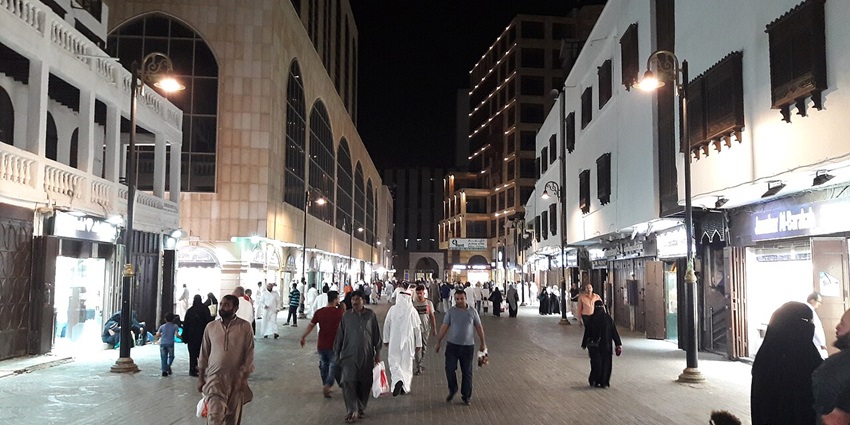
Photo: Tahir mq / Wikimedia Commons
In the heart of Jeddah lies Al-Balad, the oldest part of the city and the strongest reflection of its past. Built in the 7th century, it developed as a major port and trading hub for pilgrims travelling to Mecca. What makes Al-Balad stand out among all historical places in Jeddah is the way its coral-stone houses and wood-latticed windows have survived centuries of change. Many of these structures still carry traces of old paint, Ottoman-era doors, and iron lanterns. Small mosques, family-run bakeries, antique shops, and craft stalls operate just as they did long ago.
How To Reach: Located in central Jeddah, easily reachable by taxi or local buses.
Timings: 24*7
Nearby Attractions: Naseef House, Matbouli House Museum, Souq Al Alawi.
2. Naseef House
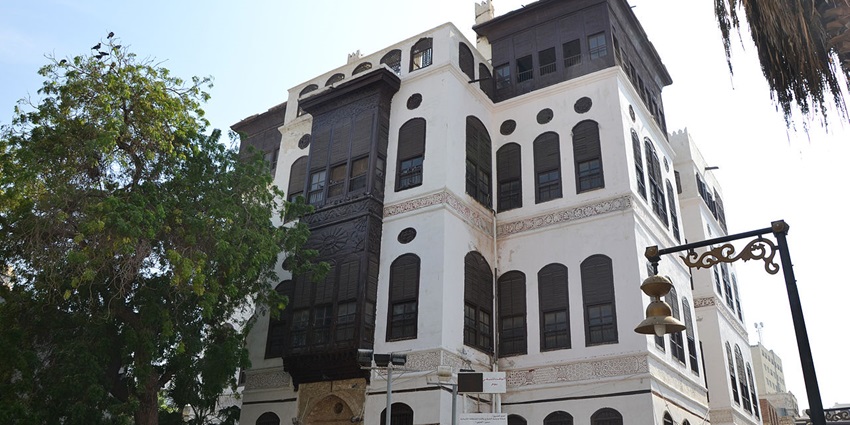
Photo: Sammy Six / Wikimedia Commons
Among all the historical places in Jeddah, Naseef House carries a certain quiet dignity. Built in the 1880s by one of the city’s wealthiest families. The building itself tells its story before you even step inside, where its coral stone walls, hand-carved teak wood balconies, and arched windows reflect the trade routes that shaped this city. A unique feature of this house is the wide ramp that allowed camels to walk goods straight to the upper floors. King Abdulaziz Al Saud’s entrance gates, traditional windows and signage stayed here during his early visits to Jeddah, and that alone gives it historical weight.
How To Reach: Situated within Al-Balad, a short walk from nearby heritage spots.
Timings: 8 AM – 11 PM
Nearby Attractions: Beit Al Balad, historic coral houses, and local souqs.
3. Matbouli House Museum
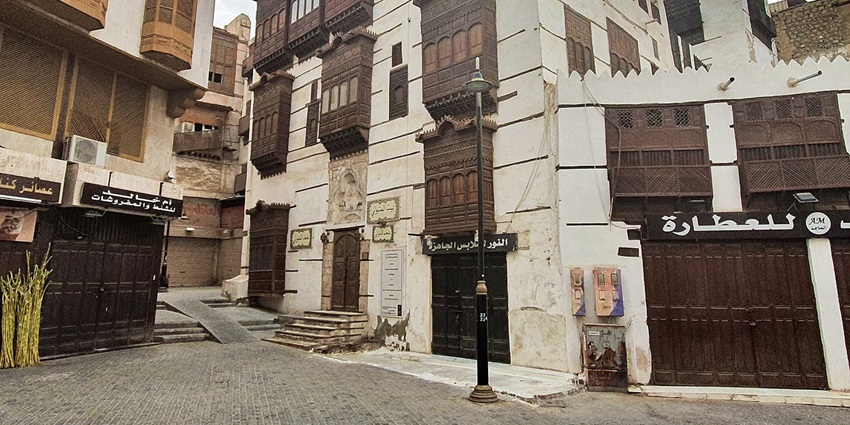
Photo: Richard Mortel / Wikimedia Commons
This coral-stone mansion tucked inside the lanes of Al-Balad once belonged to a prominent trading family. Now known as Matbouli House Museum, it stands quietly among the historical places in Jeddah, offering a close look at the domestic life of Hejazi families. The exterior still carries the rough texture of coral limestone pulled from the Red Sea. Wooden roshan windows filter in warm light while keeping the heat out. Inside, the rooms are arranged across multiple floors, each filled with antiques like old telephones, radios, handwritten notes, and household tools left just as they were.
How To Reach: Located in Al-Balad, walkable from major landmarks.
Cost: Around 10 SAR.
Timings: 9 AM – 12 PM, 5 PM – 10 PM.
Nearby Attractions: Qabel Trail, Naseef House, and traditional gold markets.
4. Al-Shafi’i Mosque
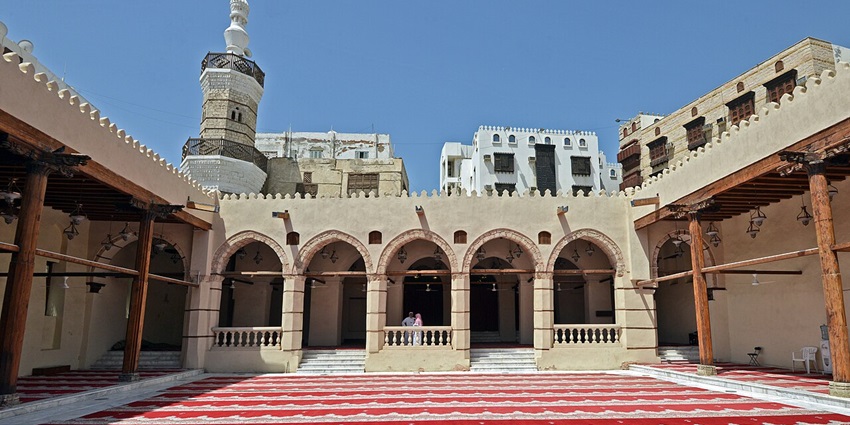
Photo: Ahmad AlHasanat / Wikimedia Commons
Al-Shafi’i Mosque has been part of Jeddah’s daily rhythm for centuries. It is one of the few historical places in Jeddah that has seen generations come and go without ever closing its doors. Built using coral limestone and old timber, the mosque reflects the materials that once shaped most of the city. The square minaret, influenced by the early Ottoman style, rises modestly but firmly above the surrounding homes. Inside, the wooden ceiling rests on rows of carved columns, and the floor is covered with simple prayer rugs that change with the seasons.
How To Reach: Found in the heart of Al-Balad; accessible by car or on foot.
Timings: Visitors are allowed outside prayer hours.
Nearby Attractions: Ancient water wells, coral stone homes, and artisan shops.
5. Bait Al Balad (Jeddah Historical Museum)

Photo: Tahir mq / Wikimedia Commons
Bait Al Balad now stands as one of the few historical places in Jeddah that carefully preserves both the building and the stories inside it. The house itself is built with coral stone walls and shaded by broad wooden roshan, a style shaped by the Red Sea’s climate and trade routes. Inside, the rooms are filled with old photographs, handwritten letters, maps, traditional garments, and everyday objects that belonged to people who lived and worked in the city during the late 19th and early 20th centuries. Each floor focuses on a different side of Jeddah’s past of trade, pilgrimage, and urban life.
How To Reach: Located on the northern edge of Al-Balad; best reached by taxi.
Cost: 10–15 SAR.
Timings: 8 AM – 2 PM (Saturday to Thursday).
Nearby Attractions: Souq Bab Makkah, Red Sea Arts Centre, Al-Balad entry gate.
6. Hassan Enany Mosque
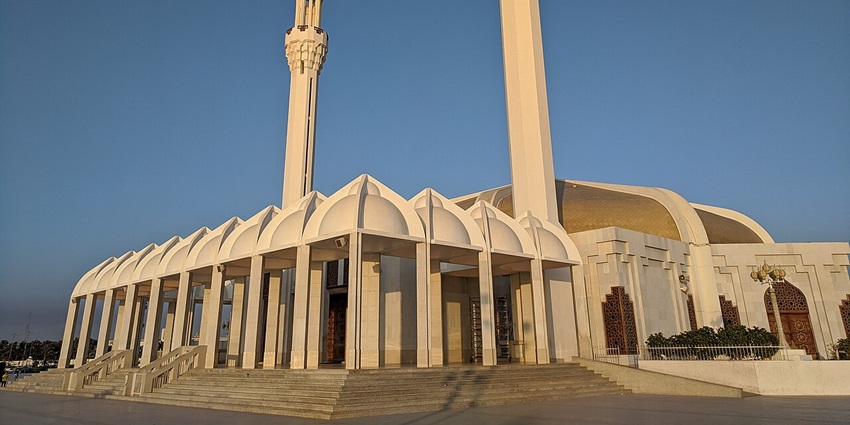
Photo: Nick-D / Wikimedia Commons
Hassan Enany Mosque stands quietly along the Corniche, where its dome and minaret have become part of the city’s familiar skyline. Though built in the 1980s, it holds its place among the most admired historical places in Jeddah because of the way it honours classical Islamic architecture. Commissioned by the Enany family, the mosque was designed with great care, using traditional elements that give it the character of something much older. The tiled façade, wooden detailing, and symmetry in the design all reflect Ottoman influences.
How To Reach: Situated along Corniche Road; easy access by taxi or car.
Timings: Open during prayer hours; outside visits allowed between prayers.
Nearby Attractions: King Fahd Fountain, Jeddah Waterfront, Al Andalus Park.
7. Jeddah Corniche
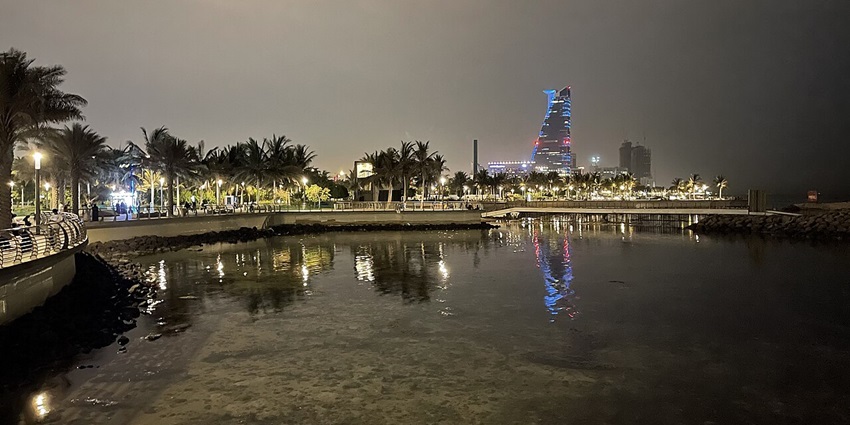
Photo: Joseph Azrak / Wikimedia Commons
The Jeddah Corniche is more than a public promenade; it is a place where the city’s relationship with the sea becomes visible. Though known today for its parks and fountains, it also belongs on the map of historical places in Jeddah. This coastal strip once marked the edge of the city, where fishermen, traders, and travellers arrived before highways and airports connected Jeddah to the rest of the kingdom. Over the years, public sculptures, mosques, and pavilions were added, many designed by prominent Saudi and international artists.
How To Reach: Extends along the Red Sea coast; reachable via car, taxi, or public bus.
Timings: 24*7
Nearby Attractions: Floating Mosque, Jeddah Sculpture Museum, Fakieh Aquarium.
8. Al Tayebat International City For Sciences And Knowledge
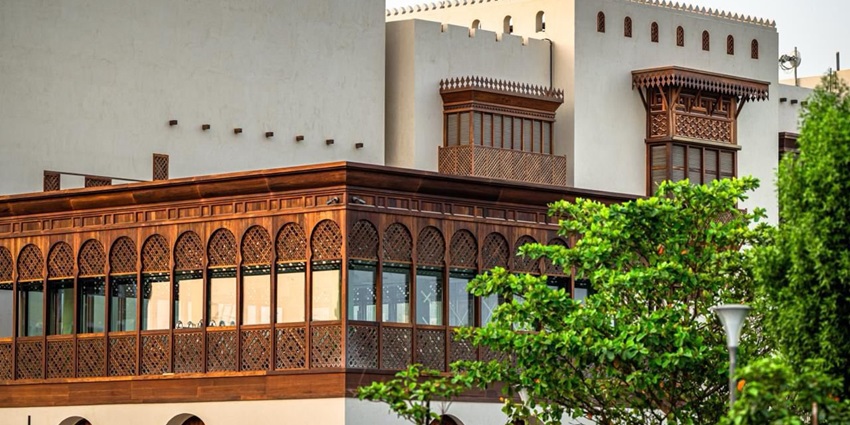
Photo: Ali Lajami / Wikimedia Commons
Hidden in the Al-Faisaliyah district, Al Tayebat International City for Sciences and Knowledge is one of the most extensive and thoughtfully curated historical places in Jeddah. Built in the traditional Hijazi style, the structure itself is part of the experience with multi-level buildings. Inside, the museum spans dozens of rooms and galleries, each dedicated to a different aspect of Islamic, Arabian, and Jeddawi culture. You’ll find handwritten Qur’anic manuscripts, ancient coins, tribal jewellery, maps, and artefacts that trace the region’s development over centuries.
How To Reach: Found in Al-Faisaliyah district; accessible by taxi.
Cost: About 30 SAR per adult.
Timings: 8 AM – 12 PM and 5 PM – 9 PM( Saturday to Thursday)
Nearby Attractions: King Saud Mosque, Al Salam Mall, local cafés.
9. Angawi House
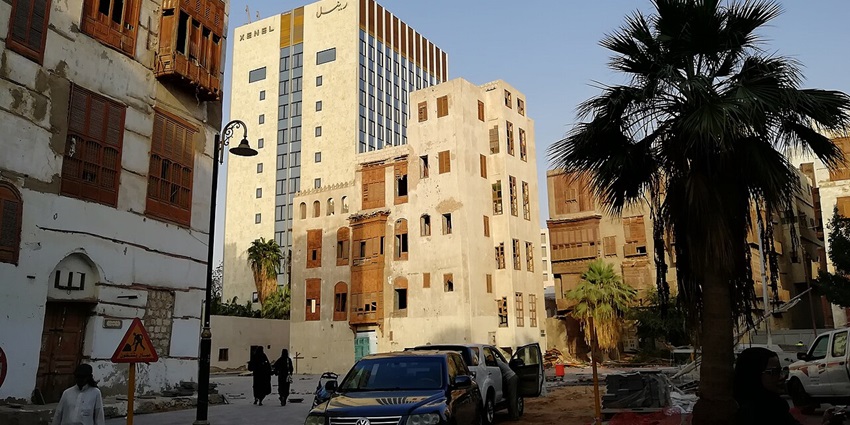
Photo: Ashashyou / Wikimedia Commons
Angawi House still holds its place among the most respected historical places in Jeddah because of what it represents. Designed and lived in by the late Dr. Sami Angawi, an architect and cultural preservationist. It reflects his lifelong dedication to Hijazi heritage and sustainable design. Located in the Al Zahra district, the house blends traditional materials with contemporary function, using coral stone, hand-carved wood, and open courtyards that allow natural airflow. The house also serves as a cultural space where scholars, artists, and visitors gather for dialogue and exhibitions.
How To Reach: Located in Al Zahra district; visit only by prior arrangement.
Timings: Private tours and events only.
Nearby Attractions: North Corniche, fine dining spots, and cultural studios.
10. Al-Juffali Mosque

Photo: Richard Mortel / Wikimedia Commons
Standing beside a peaceful lagoon in the Ministry Complex area, Al-Juffali Mosque is one of the most photographed and recognisable historical places in Jeddah. Its clean white dome, tall minaret, and spacious marble courtyard make it a striking presence against the water. The mosque sits near the old city’s edge, where Jeddah’s expansion began to reach westward. Locals gather here daily for prayer, and during Ramadan and Friday congregations, it fills with worshippers from nearby offices and neighbourhoods. Outside of prayer times, visitors often stop to admire its reflection in the lagoon.
How To Reach: Located by the lagoon near the Ministry Complex; a taxi is the best option.
Timings: Open during prayer times; tourists may visit between prayers.
Nearby Attractions: King Fahd Fountain, Jeddah Islamic Port, Al Andalus Gardens.
The historical places in Jeddah are more than architectural sites; they are pieces of a living story. Each building, mosque, and museum holds memories of the people who shaped the city, from merchants and scholars to builders and visionaries. These spaces still serve their communities, still carry the same warmth, and still invite visitors to look closer. Explore more such adventures offered by TripXL for an unforgettable experience in far-off places.
Cover Photo: Gregor Rom / Wikimedia Commons


 WhatsApp
WhatsApp
 Twitter
Twitter









